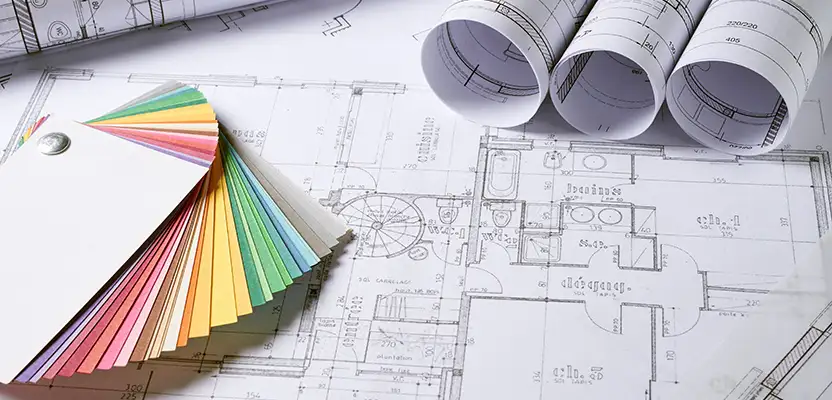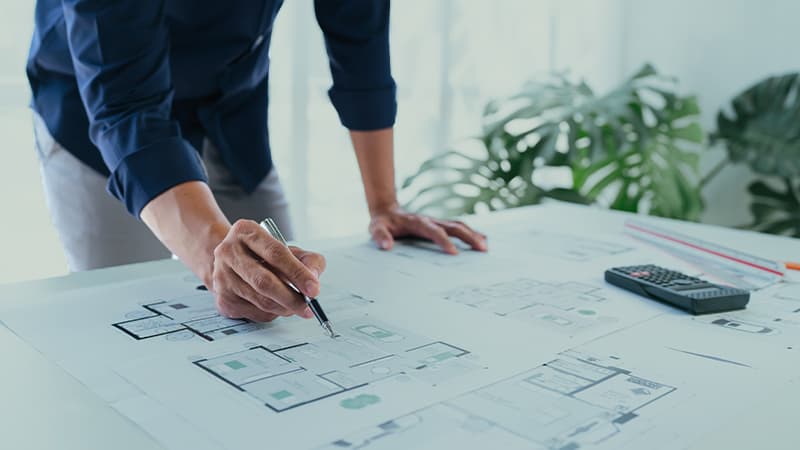Architect Workflow Optimization for More Efficient Project Delivery
Architect Workflow Optimization for More Efficient Project Delivery
Blog Article
Comprehending the Diverse Job Paths Available for Aspiring Architect
As a hopeful Architect, you have a globe of profession paths waiting on you. Each path provides distinct challenges and possibilities to use your creative thinking and technical expertise. Whether you're drawn to standard architecture or the subtleties of lasting design, there's a particular niche that aligns with your rate of interests. Comprehending these varied options can form your professional journey, but which instructions will you choose to discover initially?
Conventional Architecture: Designing Structures and structures
Traditional architecture focuses on making structures and frameworks that mix functionality with aesthetic allure. As you discover this area, you'll appreciate the elaborate balance in between kind and function. You'll discover to attract motivation from historical styles, integrating aspects like symmetry, products, and craftsmanship. Your styles can show social heritage, showcasing local practices while satisfying contemporary requirements.
You'll create abilities in drafting, model-making, and website analysis, enabling you to visualize and connect your ideas effectively. Involving with customers, you'll require to understand their vision and translate it right into practical layouts.
Additionally, constructing codes and sustainability practices are essential in your work, ensuring your frameworks are risk-free and environmentally friendly. As you grow in your occupation, you'll discover opportunities in domestic, commercial, or perhaps remediation tasks, each offering one-of-a-kind obstacles. Welcoming traditional design leads the way for a satisfying job that pays tribute to the past while forming the future.
Urban Planning: Shaping Areas and Public Spaces
As an aspiring Architect, you can play an essential function as an urban organizer, transforming how neighborhoods operate and communicate. By employing area engagement approaches, you'll assure that residents have a voice in forming their environment. And also, incorporating lasting design principles will certainly help produce rooms that not just meet today's demands yet likewise secure the future.
Role of Urban Planners
While several may assume of architects as the single enthusiasts behind structures, city organizers play a necessary duty in shaping the wider landscape of areas and public rooms. By collaborating with different stakeholders, you'll help create parks, transportation systems, and domestic areas that promote social communication and access. Your expertise in spatial layout and neighborhood characteristics enables you to envision future growth while maintaining cultural heritage.
Area Engagement Approaches
Effective community interaction techniques are crucial for metropolitan organizers to guarantee that the voices of residents are heard and valued in the preparation procedure. To cultivate significant discussion, you should prioritize open online forums and workshops where neighborhood members can share their ideas and problems. By proactively paying attention and integrating feedback, you'll develop spaces that mirror the community's demands, eventually leading to more lasting and effective metropolitan environments.
Sustainable Design Principles
When making urban rooms, integrating lasting layout principles is critical for producing atmospheres that flourish both ecologically and socially. Consider incorporating green rooms, like gardens and parks, to enhance biodiversity and improve air quality.
Creating with water preservation in mind is also crucial-- think of rainfall gardens and permeable surface areas to take care of stormwater. Including community participants throughout the planning process guarantees that the rooms you create fulfill their demands and encourage social interaction. By embracing these principles, you'll add to vivid, sustainable city landscapes that benefit every person.

Landscape Architecture: Producing Sustainable Outside Atmospheres
As you check out landscape architecture, you'll uncover vital design principles that create lovely and practical exterior rooms. Sustainable practices play an important function in making certain these atmospheres grow while lessening environmental influence. Plus, you'll locate a variety of occupation chances that permit you to make a genuine difference in how individuals interact with nature.
Design Principles in Landscape
Understanding layout concepts in landscape design is vital for developing lasting outside atmospheres that integrate with nature. You'll require to contemplate aspects like equilibrium, proportion, and scale to guarantee your designs feel cohesive and inviting. Incorporating native plants not only improves biodiversity however also decreases water usage, making your landscape resilient. Think of the flow of space and how individuals connect with it; pathways and seating areas must welcome expedition and relaxation. Additionally, focus on seasonal modifications, creating with products that match the environments year-round (Architect). By prioritizing sustainability and appearances, you can produce outdoor rooms that improve the neighborhood and promote wellness. Accepting these concepts will establish a strong structure for your career in landscape style.
Sustainable Practices Review
Lasting techniques in landscape design not just concentrate on visual appeals yet additionally focus on environmental health and source conservation. By integrating indigenous plants, you enhance biodiversity and lower the demand for chemical plant foods and chemicals. Implementing efficient watering systems aids preserve water and decreases runoff, safeguarding neighboring environments. You can develop spaces that promote dirt wellness, such as practicing and using natural products permaculture principles. Furthermore, including green facilities, like rain gardens and permeable sidewalks, help in stormwater management and lowers metropolitan warm. You add to a much healthier earth and offer spaces that promote community connection when you produce outdoor atmospheres with sustainability in mind. Eventually, these techniques ensure your styles benefit both people and the setting for years to find.
Job Opportunities Exploration
With a solid foundation in lasting techniques, landscape design offers a selection of profession courses that allow you to make a purposeful influence on the atmosphere. Urban organizers usually team up with landscape architects to produce eco-friendly rooms in metropolitan settings, enhancing city livability. If you're passionate about education and learning, think about becoming a landscape design teacher, motivating future generations.
Sustainable Design: Focusing on Eco-Friendly Practices
As you discover your career in architecture, embracing eco-friendly techniques can establish you apart in a competitive field. Sustainable layout focuses on developing buildings that decrease environmental influence while enhancing owner health. By incorporating renewable materials, energy-efficient systems, and sustainable structure techniques, you'll add to a greener future.
Start by acquiring knowledge of green qualifications like LEED or BREEAM, which can strengthen your credentials. Take into click here consideration just how natural light, ventilation, and thermal efficiency can optimize design. Collaborate with engineers and ecological experts to innovate solutions that minimize waste and save sources.
Don't neglect the relevance of area involvement-- appealing neighborhood stakeholders can inspire designs that balance with the environment. As customers increasingly prioritize sustainability, your know-how in environmentally friendly practices will certainly not only bring in tasks but also accomplish your passion for responsible design. Welcome this critical aspect of the career, and watch your profession thrive.
Historical Preservation: Shielding and Restoring Social Heritage
While you start on your architectural journey, think about the vital duty of historic conservation in maintaining our social heritage. This area concentrates on the protection and restoration of considerable structures, websites, and frameworks that inform the stories of our past. By involving in historical conservation, you'll help safeguard the building legacy that forms area identification.
As a historic conservation Architect, you'll assess historic relevance and assess the problem of structures. You'll function carefully with conservationists and chroniclers to guarantee genuine restoration methods are employed. This career path enables you to blend creative thinking with study, allowing you to make services that value initial products and workmanship.
Your job not just contributes to sustainability by recycling existing buildings but also promotes a feeling of pride within areas. Welcoming this course will assist you become a guardian of history, preserving the stories and visual appeals that enrich our lives.
Inside Architecture: Enhancing Indoor Spaces
Historic preservation and indoor architecture both share a dedication to enhancing the developed atmosphere, but they concentrate on different elements. While historical preservation highlights preserving a framework's social and historic value, interior design zeroes in on enhancing indoor rooms for capability and visual appeals.
As a hopeful Architect, you'll locate that indoor style permits you to blend creativity with technological abilities. You'll develop spaces that not only look great however also advertise comfort and effectiveness. This area involves comprehending exactly how light, color, and materials connect within a space, impacting state of mind and functionality.
You'll function on different projects, from household homes to commercial workplaces, making sure that each atmosphere satisfies the demands of its passengers. By focusing on individual experience, you can transform interiors right into motivating and useful areas, making a significant effect on how people interact with their surroundings. Welcome the chance to improve indoor environments and shape the method individuals function and live.
Industrial Layout: Combining Capability With Aesthetics
Commercial design plays an important function in developing products that flawlessly mix aesthetic appeals with capability, making certain that what you utilize day-to-day is not just visually attractive but likewise useful. As an aspiring Architect, you can immerse on your own in this field, focusing on making every little thing from furnishings to customer electronic devices. Your job includes recognizing individual requirements, products, and making procedures, enabling you to create ingenious services that improve day-to-day experiences.
In commercial design, you'll typically work together with designers, marketing experts, and manufacturers, making certain that your designs are not just stunning yet additionally viable. This occupation course offers a vibrant setting where creativity fulfills practicality, making it a fulfilling choice for architects interested in forming the products of tomorrow.
Frequently Asked Questions
What Educational Accreditations Do I Need to End Up Being a Designer?
To become an engineer, you'll require an expert level in style, normally a Bachelor's or Master's. Additionally, you'll have to complete a teaching fellowship and pass the Architect Enrollment Examination to exercise legitimately.
Exist Accreditation Requirements for Various Building Occupation Paths?
Yes, there're accreditation demands for various architectural paths. Architect. You'll need to pass tests, full internships, and occasionally seek specialized training, depending on your chosen emphasis, like landscape design, city style, or historical preservation
What Software Program Abilities Are Essential for Architects Today?

How Can I Gain Practical Experience While Studying Style?
You can acquire functional experience by interning at building companies, taking part in style competitions, offering for neighborhood tasks, or collaborating with classmates on real-world tasks. These chances improve your skills and construct beneficial connections in the industry.
What Task Opportunities Exist Outside Standard Design Firms?
You can discover different work chances outside conventional design companies, like urban preparation, interior style, landscape style, building and construction management, real estate advancement, and even functions in sustainability consulting. Each offers distinct obstacles and benefits.
Whether you're drawn to conventional architecture or the nuances of sustainable layout, there's a niche that aligns with your passions.When creating urban spaces, including lasting layout principles is essential for developing environments that prosper both environmentally and socially.As you discover landscape style, you'll find essential style principles that produce beautiful and practical outside spaces.Understanding design concepts in landscape architecture is important for developing lasting outside settings that harmonize with nature.In industrial design, you'll typically work together click here with marketers, makers, and engineers, guaranteeing that your layouts are not just gorgeous however additionally practical.
Report this page